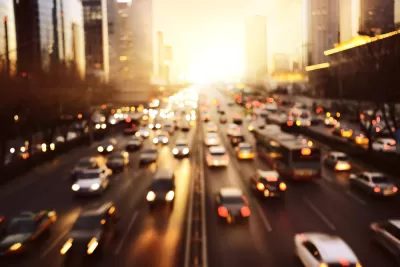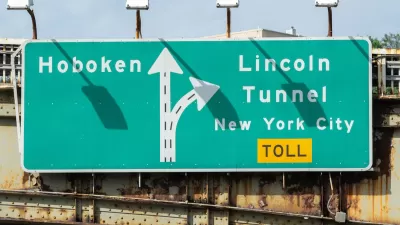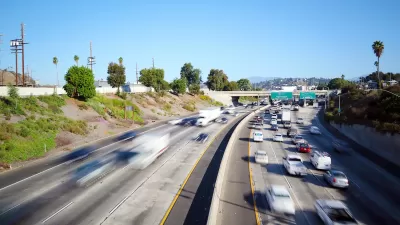Local leaders must invest in public transit and other incentives to reduce the number of private vehicles and congestion in cities.

"Understanding how cars affect cities and commute times is of vital importance, both for the sake of the climate—transportation is the biggest share of U.S. emissions and a growing chunk globally—and quality of life," writes Dharna Noor. A new study "modeled the time car trips take, factoring in the baseline length of the trip on empty streets, the time added by other drivers who create traffic, and the time added by the designation of some street lanes for exclusive use by pedestrians, buses, and bikes" to conclude that "we have to start getting cars off the road—and fast—if we want to avoid cities being overrun by gridlock."
The choice between driving and using other modes of transit, Noor writes, "creates an inherent paradox. If more people decide that driving is quicker, there will be more traffic, clogging streets and making trips longer. The longest trips across town, the authors found, were the ones taken when every single resident tries to reduce their commute times by driving, thus creating the most traffic."
"The authors also discuss some ways to reduce the time it takes to get across a city and lower carbon pollution, including investing in more reliable and quick public transit, building more bike lanes and walking paths, and not separating residential areas from commerce. They also suggest reducing the number of traffic lanes in cities and building less parking to discourage people from driving or even owning a car in the first place, making city travel faster for everyone."
Despite some limitations in the analysis, "the model is instructive, showing the logical fallacy of attempting to reduce drive times by increasing the use of cars."
FULL STORY: Why Cities Should Ban Cars, According to Science

Study: Maui’s Plan to Convert Vacation Rentals to Long-Term Housing Could Cause Nearly $1 Billion Economic Loss
The plan would reduce visitor accommodation by 25,% resulting in 1,900 jobs lost.

North Texas Transit Leaders Tout Benefits of TOD for Growing Region
At a summit focused on transit-oriented development, policymakers discussed how North Texas’ expanded light rail system can serve as a tool for economic growth.

Using Old Oil and Gas Wells for Green Energy Storage
Penn State researchers have found that repurposing abandoned oil and gas wells for geothermal-assisted compressed-air energy storage can boost efficiency, reduce environmental risks, and support clean energy and job transitions.

Santa Barbara Could Build Housing on County Land
County supervisors moved forward a proposal to build workforce housing on two county-owned parcels.

San Mateo Formally Opposes Freeway Project
The city council will send a letter to Caltrans urging the agency to reconsider a plan to expand the 101 through the city of San Mateo.

A Bronx Community Fights to Have its Voice Heard
After organizing and giving input for decades, the community around the Kingsbridge Armory might actually see it redeveloped — and they want to continue to have a say in how it goes.
Urban Design for Planners 1: Software Tools
This six-course series explores essential urban design concepts using open source software and equips planners with the tools they need to participate fully in the urban design process.
Planning for Universal Design
Learn the tools for implementing Universal Design in planning regulations.
Borough of Carlisle
Caltrans
Heyer Gruel & Associates PA
Institute for Housing and Urban Development Studies (IHS)
City of Grandview
Harvard GSD Executive Education
Toledo-Lucas County Plan Commissions
Salt Lake City
NYU Wagner Graduate School of Public Service





























